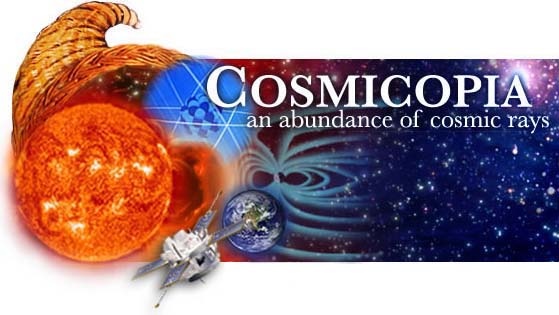
Glossary:
O and P
- Orbit
- The path a body takes around another object or point in space under the influence of various physical forces, including gravity.
- Order of magnitude
- Two quantities are of the same order of magnitude if one is less than 10 times as large as the other. Each increase of one power of 10 is an increase in magnitude of 1. For example, 106 is 4 orders of magnitude above 102.
O
- Parker spiral
-
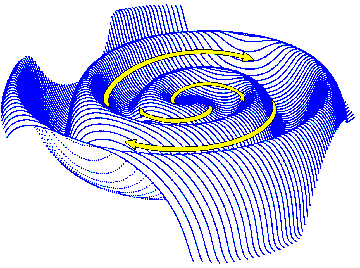 As the Sun's magnetic field is carried out through the solar system, the Sun is rotating. Its rotation winds up the magnetic field into a large rotating spiral, known as the "Parker spiral", named after the scientist who first described it. The Parker spiral magnetic field is indicated by the yellow arrows.
As the Sun's magnetic field is carried out through the solar system, the Sun is rotating. Its rotation winds up the magnetic field into a large rotating spiral, known as the "Parker spiral", named after the scientist who first described it. The Parker spiral magnetic field is indicated by the yellow arrows. The magnetic field is primarily directed outward from the Sun in one of its hemispheres, and inward in the other. This causes opposite magnetic field directions in the Parker spiral. The thin layer between the different field directions is described as the "neutral current sheet". Since this dividing line between the outward and inward field directions is not exactly on the solar equator, the rotation of the Sun causes the current sheet to become "wavy", and this waviness is carried out into interplanetary space by the solar wind.
Image courtesy J. Jokipii, University of Arizona
- Photo-ionization
- The loss of an electron by an atomic particle by a solar ultraviolet photon. This can occur when neutral interstellar material leaks into the heliosphere and creates pick-up ions.
- Photon
- A unit or "particle" of electromagnetic energy, or light.
- Photosphere
- The visible surface of the Sun. Above it are the chromosphere, then the corona.
- Physics
- The science dealing with matter and energy and their interaction.
- Pick-up ions
- The forerunners of ACRs. Neutrally charged interstellar material leaks into the heliosphere, and as it does it loses an electron. The Sun's magnetic field then picks up these newly charged particles, and carries them outward to the solar wind termination shock. These particles are called pick-up ions during this time.
- Planet
 A body that orbits a star in a solar system and which shines only by
reflected light. This image of Saturn is courtesy of NASA
GSFC.
A body that orbits a star in a solar system and which shines only by
reflected light. This image of Saturn is courtesy of NASA
GSFC. - Plasma
- A fourth state of matter -- not a solid, liquid or gas. In a plasma, the electrons are pulled free from the atoms and can move independently. The individual atoms are charged, even though the total number of positive and negative charges is equal, maintaining an overall electrical neutrality.
- Post-acceleration
- An instrument that re-accelerates a previously slowed
particle to determine its mass. Post-acceleration is used in the
SWICS instrument on the ACE spacecraft.
- Proton
- The positively charged part of an atom. The number of protons determines which element the particle is. It is part of the nucleus.
P
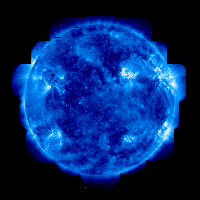

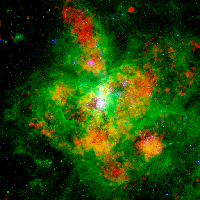
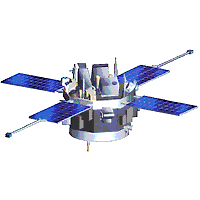
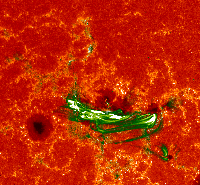
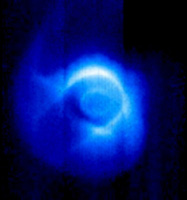
Click on images above to
learn more about them
A service of the Heliophysics
Science Division at NASA's GSFC
Questions and comments to: cosmicopia@cosmicra.gsfc.nasa.gov
Curator: Dr Eric R. Christian, NASA
Responsible NASA Official: Dr Eric R. Christian
Privacy Policy and Important Notices
Questions and comments to: cosmicopia@cosmicra.gsfc.nasa.gov
Curator: Dr Eric R. Christian, NASA
Responsible NASA Official: Dr Eric R. Christian
Privacy Policy and Important Notices

HOME
In the News
History
Ask Us
Great Links
Glossary
Site Map
Search NASA